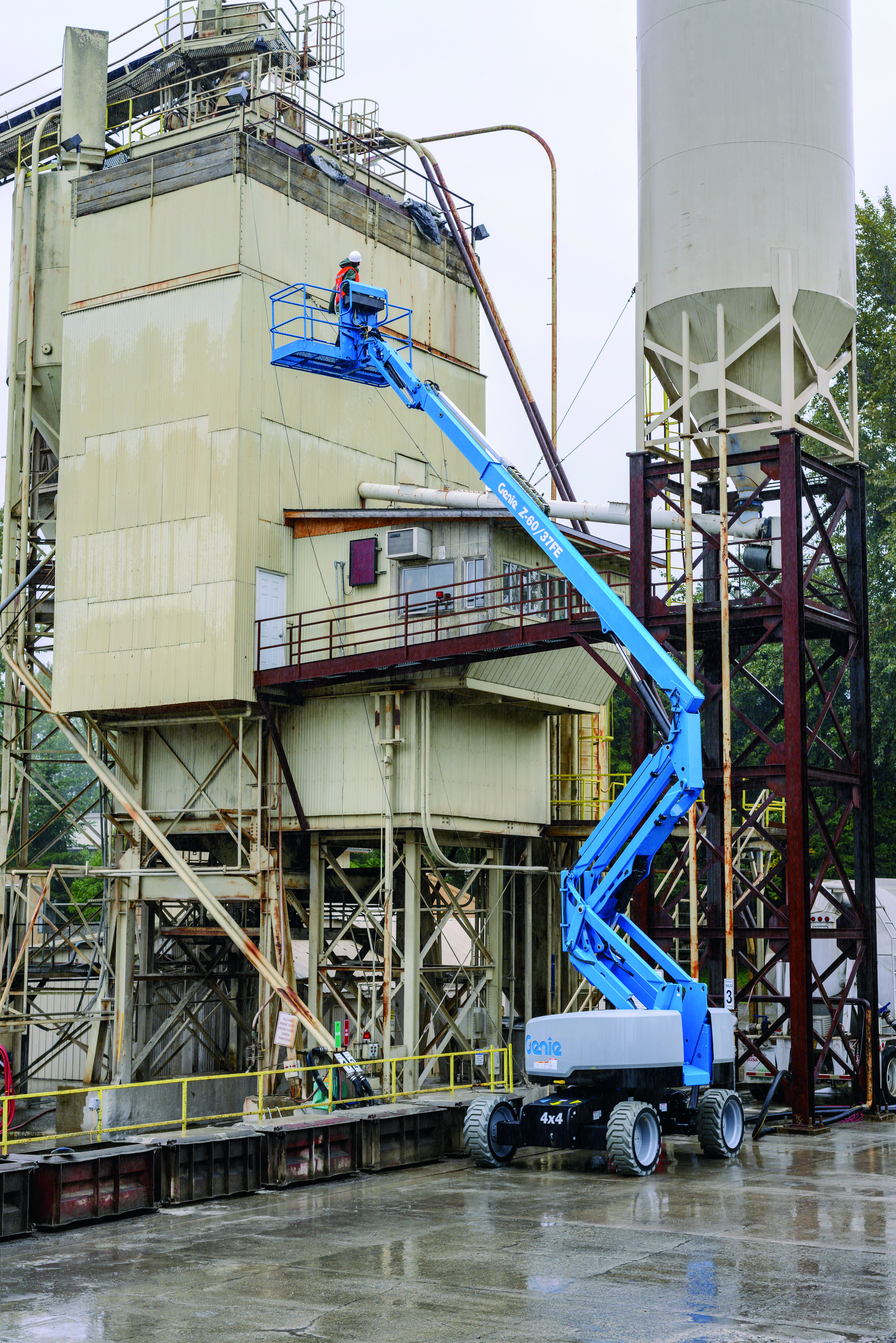What in the World Is a MEWP?
MEWP stands for Mobile Elevating Work Platform, and that’s what the American National Standards Institute (ANSI) calls aerial lifts. ANSI revised its standards for mobile elevating work platforms in December 2018, and the changes are intended to enhance the safety of operators, occupants, observers, and others working nearby. It is important to note OSHA’s current standards, 1910.67 for vehicle-mounted elevation and rotating work platforms, and 1910.68 for manlifts, reference ANSI standards from 1969 or earlier, so those are the standards that OSHA enforces. The newer standard just issued by ANSI in December 2018, and covered in this article, includes best practices. They may be used in liability litigation, but not in OSHA compliance citations. There are three new standards: ANSI/SAIA A92.2 establishes design standards, safety requirements, and test methods; A92.22 covers safe use of MEWPs; and A92.24 establishes training requirements. There are changes to design, construction, and safe use. However, foundries don’t build MEWPs, so only the new safe use and training requirements apply.
First are the manuals. All MEWPs should already have a manufacturer’s operating manual and an ANSI Manual of Responsibilities in a weather-resistant case on the machine. There may be other manuals provided by the manufacturer. All updated manuals are required to be stored in the case by Dec. 10. These can usually be obtained from your MEWP manufacturer.
Second, there are changes to safe use procedure requirements.
Planning: A safe use program must be developed that includes risk assessment and selection of the appropriate MEWP based on the risk assessment. The plan should also address any site preparation needed, ensuring the MEWP is inspected and maintained, and the communication of site safety policies and how to deal with specific safety hazards in the operating area. Another requirement of the safe use program is making sure trained and qualified supervisors watch over the operation to ensure safe use and compliance with safety rules. Employees working near MEWPs, but not directly with the equipment, must also be trained on the hazards associated with working around a MEWP. Last, there must always be at least one person on site not working in the MEWP but familiar with ground controls so that they can lower the MEWP in an emergency.

Maintenance and Repair: Users of MEWPs must ensure all service technicians are properly trained and qualified to service the MEWP in question. This includes those doing frequent and periodic inspections and those doing repair work.
Exiting/Entering the Platform: Those working in a MEWP platform should only enter and exit using the manufacturer’s procedures. If entering or exiting at other than ground level, occupants should be trained in applicable fall protection procedures, how load changes can affect stability, the hazards of unexpected MEWP movement, proper distance between the platform and structure as well as several other topics.
Rescue planning: The safe use plan must include a plan to rescue occupants stranded in an elevated platform. This can be as simple as the operator utilizing emergency power to lower the platform or a trained responder using ground controls to lower it. They can also be as complicated as calling in a rope rescue team to retrieve the occupants. Like fall prevention plans, MEWP rescue plans should include retrieval of an employee hanging in a harness.
Third, are the training requirements. One thing that hasn’t changed is that operator training and authorization are required. However, now training is also required for platform occupants, supervisors/observers, and emergency responders. Operator training should be delivered by a certified trainer and include classroom and a hands-on practical evaluation. Fall protection should be included for any MEWP that rotates or otherwise moves in any way other than strictly vertical. Parts of the MEWP, its controls, center of gravity, and stability issues should be covered. Document the training thoroughly including sign-in sheets, classroom tests, and practical evaluations. Following are the other ANSI training requirements:
Platform Occupant Training: Occupants other than the operator must be trained in proper use of fall protection where required, emergency descent, working within the safe use program, and how to move and work without affecting the stability of the MEWP. This training can be delivered by a trained and authorized supervisor or by the MEWP operator.
Supervisor Training: All supervisors who directly supervise MEWP operators must be trained in the regulations and standards, how to choose the right MEWP for the task, location and use of the MEWP operation manuals, and recognizing and reducing operational hazards.
Operator Retraining: A qualified person must periodically observe the operator to monitor and assess their skill level. Retraining is required whenever observers note poor or unsafe operation, incidents involving the equipment being operated, or operation of a MEWP with different controls or features. In addition, retraining is required if the operator hasn’t used a MEWP in a long time or their operating license has expired.
Familiarization Training: Regardless of the experience level of the operator, a familiarization training must take place before using a MEWP different than what the operator normally uses. This shortened training should include where manuals are stored, confirmation that required manuals are present and reading of the manuals. It also includes a hands-on review of the use and function of all controls, use of specific options, and other items if specified by the manufacturer. Familiarization training is for already trained operators and should not be confused with a full training program.
If any of this is confusing, know that most good rental companies and manufacturer’s representatives can and will help you. There are also free online resources such as operating manuals on many of the manufacturers’ websites.
Click here to see this story as it appears in the August 2019 issue of Modern Casting.